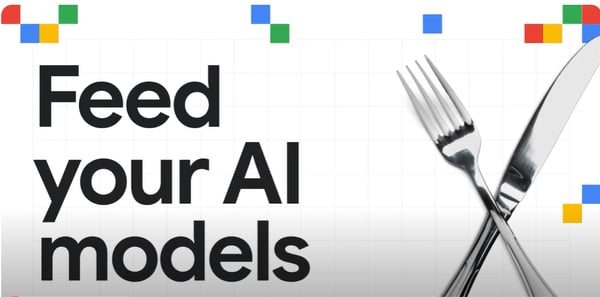Time flies: CrateDB is now seven years in the making. Almost four hundred releases later, we have learned a lot about our customers, our community, and the other players in the industry. Also, we've learned a lot about how this ever-changing and accelerating market works; we know we must constantly re-evaluate and adapt.
In 2019, we decided to embrace the open-core model by introducing a commercial Enterprise Edition of CrateDB. This Enterprise Edition would co-exist with a free, open-source Community Edition of our database, which was available for download on Github. Some of the new CrateDB features would be available under the Apache 2.0 License and some features would be proprietary, only available in the Enterprise Edition.
Back then, we believed it was a good idea. Looking back on it, it was not. Like many startups before us, we felt pressured by the need to ramp our monetization success, and the open-core model would help accelerate our revenue significantly. We have indeed accelerated top-line revenues during this period (growing 3-digit % each year); however, it has been mostly through cloud adoption. And the price we paid for our choice was to not be optimally serving our open-source users and the open-source community optimally.
After careful thinking and consideration, we decided to change all that.
At the end of 2020, there were multiple changes in the leadership of our company, including our technical leadership. This period has been an excellent opportunity to re-evaluate our thinking, values, and strategy. With the support of our returning CTO (Crate.io co-founder Bernd Dorn), CEO (Eva Schönleitner) and the engineering team, we further embraced our long focus to open source, while building a sustainable business based on our cloud offerings.
With this change, we want to be able to serve all of our users: from individual developers to big enterprises. We have thousands of CrateDB clusters running around the world, handling billions of rows of structured and semi-structured data every day. Our largest customer operates CrateDB deployments with more than 500 nodes, handling multi-petabytes of data for millions of end-users under highly concurrent workloads. But most of our deployments are in the lower range of 5-20 nodes per cluster, also operating in highly diverse environments.
So, starting with CrateDB v4.5 and from now on, we will have only one CrateDB codebase, licensed under Apache 2.0. All contributions, those made by the Crate.io engineers and those made by our community, will go into the same code base.
What exactly motivates this change? Multiple things:
- It reaffirms our position as a company. Now, we can confidently position ourselves as the real open-source database for use-cases as CrateDB comes with SQL, fully distributed and support for structured and semi-structured data. It is perfectly suited for analytics, AI/ML, and more. We believe that this decision fully enables developers to use our engine for their projects. And we're excited to see how they contribute back, helping us upgrade, fix and improve CrateDB.
- Interestingly, we learned that most (+85%) of our paying customers prefer to use CrateDB as a fully managed service in the cloud, provided and operated by us. This reality allows us to build a sustainable business by servicing and managing their production deployments in the best and most efficient way, as we as creators can only do.
- We do have (and very much value) paying customers with on-prem/self-deployment. However, the main reason they pay us is not the extra features, but being able to work closely with us; they pay us to have access to our SLAs, customer advisory, roadmap, and 24x7 support with hotfixes. We will continue to offer this service for our enterprise customers, for OEM deals, and so on. And with CrateDB Cloud Premium, we can operate CrateDB on the machines/VMs of the customer, within their regions and environments.
- Developing only one variant of CrateDB is great news for our development team. They no longer have to think about how to separate features; they are open-source developers, and they loved the idea of just running one codebase.
- As time progressed, the way we categorized enterprise and open-source features started to blur. We realized that our enterprise-only features were relevant for any user of the product – let's just take authentication or encryption as examples. It started to feel increasingly natural to open those features.
- The evolution of the ecosystem we operate in also contributed to our decision to abandon the open-core model. Offering an open-source product allows us to partner well, to be integrated easily, and to build many more win-win collaborations and opportunities.
- Lastly, the Apache 2.0 License makes it secure, reliable, and simple both for enterprises and for developers. For us, it means we can accelerate our adoption, growth, and relevance in the market.
As a Crate.io founder, I am extremely excited about our latest developments and the progress that our whole team made. While leaning towards our open-source community and the many new developers adopting CrateDB, we will continue to serve the needs of our paying enterprise customers. This is also good news for our partners, who now can deploy projects even more simply, building innovative combinations of hybrid deployments with cloud and edge support.
Let me share where we are going from here. The product that the Crate.io team is building (with its unique approach in architecture, eventual consistency, data formats, and SQL at scale with Postgres) is a key technology for the modern data stack of enterprises.
If we consider the future of data lakes and data warehouses in a post-Hadoop era, how all requirements move away from an ETL-dominated approach towards ad hoc queries, the need for real-time analytics, and simple scale—all these fuels what Crate.io is doing. A simply scalable SQL engine for structured and semi-structured data with data persistence is a "swiss knife" for many use-cases. (Streaming data is very important, but so it is persistence). We are in the middle of this storm where data rules the world, and this is only the beginning; we are seeing how a whole new ecosystem for data is emerging. It is fascinating to be part of that journey.
To wrap up, I want to take the opportunity to call out a huge thank you to our team. Like many many others, they went through a very difficult 2020 due to COVID-19 and lots of other challenges, internal and external. On behalf of the founders, the whole team, the board of directors, our investors, and our users and customers, thank you—for hanging in there and delivering the next important milestone on our journey.
I am already excited about the next product launch... We'll talk again in April!
Thx Christian


